
Plan your visit
Merrily we (un)roll along!
April 27, 2018
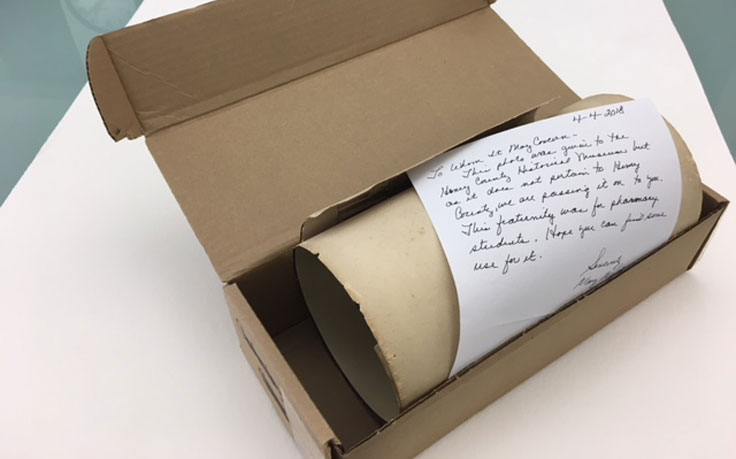
We receive donations to our collection like certificates, panorama photographs and broadsides that have been rolled, which are difficult to handle and house. It is best to store these flat so they can be more easily handled and accessed for research.
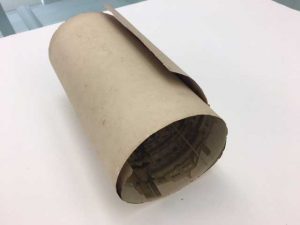
Many papers are made of poor quality paper and are brittle. The curl retained by the paper support can quickly cause tearing when attempting to unroll. To prevent this common damage from occurring, relaxing the paper is a necessary step. To accomplish this, the rolled item is often humidified by slowly introducing moisture under controlled methods in our lab. Not everything that is rolled can be safely humidified, so we must examine each item carefully. This can be tricky since a heavy paper wants to spring back into the rolled form.
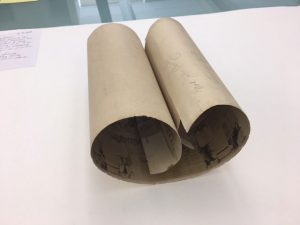
Working on a flat surface, the curled edges are carefully transposed from the exposed rolled edge to the center. This is accomplished by carefully allowing the exposed edge to unroll toward the center, followed by rolling the left edge to the center. The two sides are then unrolled from the center of the length as soft weights are placed across the surface to offer support.
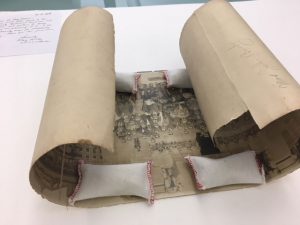
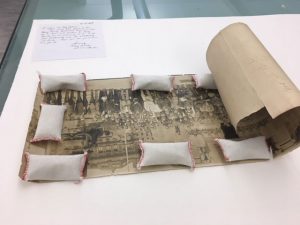

Once we have determined that humidification is possible, the next step is to relax the curl, which will safely allow removal of loose soil, mends to tears, digitization and flat storage for housing.
Humidification can be accomplished by several means but is dependent on the use of water as vapor. Simply spraying an item with droplets of water can threaten photographic emulsion layers, many inks and coatings and cause staining from the droplets themselves.
A simple chamber is used to safely introduce a water source. As water vapor evaporates from the source the fibers in the paper absorb the moisture which safely and fully relax the paper. The time it takes to relax a curl will depend on the type of paper, its thickness, and the degree of curl. Once fully relaxed, the item is placed between blotters under weights until dry.









